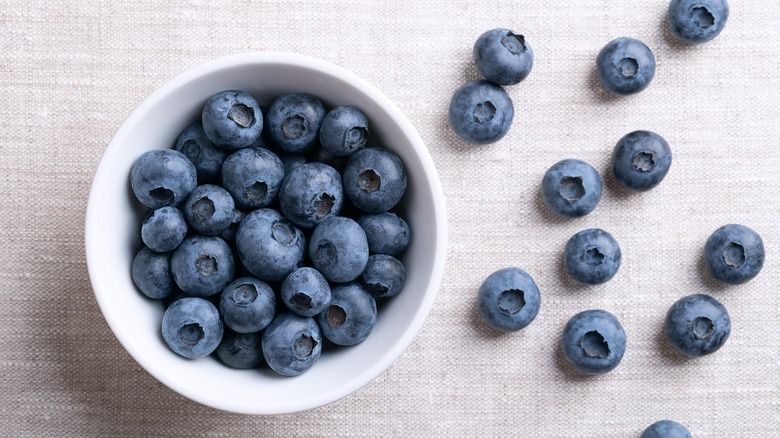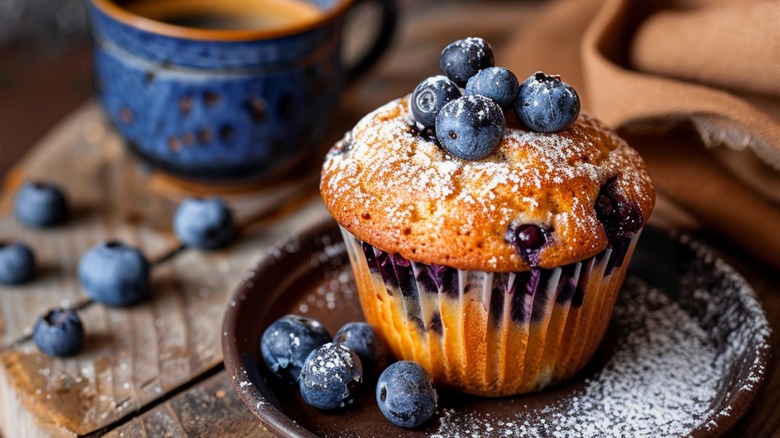What Makes Blueberries Naturally Blue?
There is so much you can do with blueberries it's no wonder they're one of the most popular fruits in America. However, when trying to choose the best pint of blueberries at the grocery store, have you ever wondered how the fruit gets its signature color and why the berries don't appear blue when mixed into baked goods? Seeing that blue isn't a color that occurs naturally often, this conundrum stumped both foodies and scientists for quite a while. Fortunately, science has found the answer.
Blueberries get their color thanks to their epicuticular coating, which gives them their waxy appearance, also known as bloom. Epicuticular waxes are fascinating to scientists, as they provide a resistance to bacteria and pests, while also affecting the cleaning and wettability of a plant. When examined under an electron microscope, scientists discovered that this coating on blueberries is comprised of nanostructures, which affect the dispersion of blue and UV light (via Science News). This is what makes the fruit appear blue to the human eye.
Researchers from several European universities and institutes sought to understand exactly how deep a blueberry's color goes, sharing their findings in the Science Advances journal in 2024. To do this, they removed the top waxy layer, which revealed a dark blue, almost black hue. When the entire skin layer was removed, the flesh had a red color, caused by the high amount of anthocyanins in blueberries, which are integral to the fruit's multifaceted color.
The health benefits of anthocyanins
Anthocyanins give blueberries their reddish-purple color after their waxy blue skin is broken during cooking or baking. While they make things like blueberry cheesecake pop-tarts and blueberry muffins look even more delicious, these flavonoids also have some surprising health benefits.
These colored pigments have historically been used for medicinal purposes as phytopharmaceuticals, which are often used in drug manufacturing in place of synthetic compounds, but are also beneficial on their own. In an article published in the Food & Nutrition Research journal in 2017, researchers explored the antioxidant properties of anthocyanins, particularly in terms of fighting cancerous cells, improving vision in patients with tension glaucoma, and beneficial antimicrobial activity. Daily consumption of anthocyanins may also aid in protecting against neurodegenerative and cardiovascular diseases, according to a 2020 study from the Molecules journal.
Fortunately for your health and taste buds, there's no shortage of ways to eat blueberries. They can be easily incorporated into everything from sweet to savory dishes. While cooking with them, you might want to further change the color of your blueberry baked goods with a few tricks or even try your own experiment to check out their colorful layers for yourself. The next time you get some out for cooking or baking, try rubbing away their waxy outer layer to get a firsthand look at what lies underneath.

